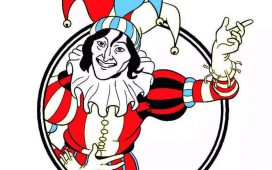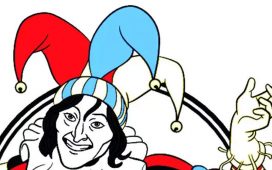Meanwhile, artists are debating their careers with AI, while history buffs and art aficionados attempt to make sense of new visualities such as AI portraits of famous Indian kings. Speaking of kings, Ashoka the Great (c. 268-232 BCE) does not appear to have been enamoured with the idea of commissioning his portrait. It was neither his style, nor was it the political or aesthetic worldview to which he belonged. He privileged instead his counsel and command and ensured that these reached far-flung parts of his empire as edicts engraved in stone. His portraits were made only after his lifetime in early Indian Buddhist sculpture.
Ashoka is depicted on the great stupa of Sanchi in Madhya Pradesh, and more incontrovertibly so on the Kanaganahalli stupa in Karnataka, where he can also be identified by the label, ‘raya asoko’, inscribed in stone (pic). Kings Ajatashatru of Magadha and Prasenajit of Kosala, contemporaries of the Buddha who ruled before Ashoka’s time, have also been portrayed in the Buddhist art of Bharhut and Sanchi (c. 200 BCE-150 CE). In Buddhist sculpture of southern India, this tradition continued with portraits of some post-Mauryan rulers such as Satavahana king Pulumavi, whose presence as image and text appears at Kanaganahalli (c. 100-300 CE).
Royal portraiture in these instances is generic and not in the nature of photographic or realistic verisimilitude. It is not possible in these sculptures to distinguish the particularised features of one king from another. A carved portrait is identified with a specific king through narrative circumstance, often as an episode from the king’s life recounting his association with the Buddha, sangha, the relic cult, or stupa worship. In rare cases, label inscriptions bearing the king’s name further confirm his identity.
The king is usually postured as a follower or benefactor of Buddhism. At times, royal battles, such as the famous ‘war for the relics’ at Sanchi, are carved in vivid detail. In most cases, these royal iconographies are not ‘portraits of power’ but ‘portraits of piety’ from the perspective of the Buddhist fold. Early Indian royal iconography often shows a king with royal insignia, parasol, regal attire, attendants, queen(s) and chariots. Such depictions also appear as images of the archetypal universal monarch or chakravartin.
Only during the Kushan interregnum (c. 1st-3rd century CE), at Mat near Mathura in Uttar Pradesh, do we see royal portraits of power and authority, of kings Vima Kadphises and Kanishka, in stone. The inspiration came from Central Asia through the north-western frontiers, and may also be seen on the coins of the period. Later portraits of medieval Hindu kings carved on temples are few – Narasimhadeva at Konark, Rajaraja Chola at Tanjore and Vishnuvardhana at Belur – to mention some prominent ones. These, again, are generic royal portraits posturing the king’s valour or benevolence.
It is in the Mughal ateliers that royal portraiture gained a palpably particularised character (pic), influenced by Persian masters and European art. Some artists from the Ottoman world are also known to have fled from the dangers of Islamic iconoclasm and migrated to the Mughal court where the art of portraiture flourished under the great Mughals. Whether as generic or specific portraits, the artists who carved and painted the great kings of India breathed life into them with their creativity and dexterity with chisels and brushes. With the arrival of AI, as with photography and digital media earlier, a new technology is at the service of the contemporary artist to portray the past, present and future. Que sera sera…











